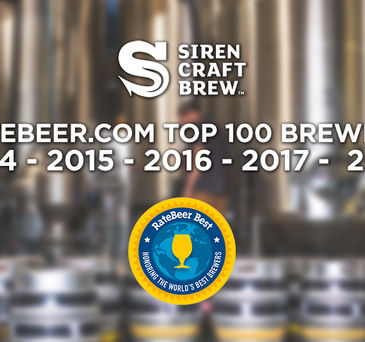A few years ago I was at a dinner party and the host was a keen importer of French wines. As we worked our greedy way through his expensive wines (in my defence, I’d been nice enough to bring along a nice bottle of Julio Gallo in thanks) he would talk me through where each wine was from. To quote him directly:
“This one is from a vineyard in the village over from the last one, and you can really taste the mileage.”
Wait, what? Taste the mileage?
To me, after my fresh lobster and caught-that-morning sea bass (Remember, I thanked the host with some nice wine) it all just tasted like wine. To the more distinguished connoisseur, I’m sure that mileage was both distinguished and delicious.
Scroll forward in my timeline a few years and I’m sat in a bar surrounded by exposed wood, brickwork and tables made out of old video games (probably) and I’m discussing West Coast vs East Coast (Also known as the Northeast, or New England IPA) beers.
What’s the difference? When does a West Coast beer turn into an East Coast beer (is there a middle beer?) and does it all really matter? Is the West vs East debate best left to Tupac and Biggie?

Long story short, in this writer (and drinker)’s opinion, yes and no.
That cleared up? No? Ok I’ll go on…
I’ll start with a basic one sentence history of the IPA. The story goes that more hops were added to pale ales, so that it would survive the treacherous long journey from Britain to India, to keep the troops stationed there in beer; thus the hop-heavy style became known as an India Pale Ale.
In the late 70’s, American Breweries were experimenting and looking for new styles to make their name on. This is where the IPA came in. On the West Coast, breweries found themselves near hop farms, growing hops like Columbus, Cascade and Centennial. These hops were known for piney flavours and bitterness. With a fairly mild malt base the tropical fruit flavours and citrus from the hops was allowed to shine, with that classic bitter ending we all know and love.
Later, in fact far more recently, breweries in the Northeast of America started brewing a more hazy, fruity style with less hop bitterness. Bizarrely, this is largely due to Hurricane Irene, which forced cult brewpub ‘The Alchemist’ to focus on their undamaged new canning production, and the beer designed for it, Heady Topper.
The popularity of this beer didn’t go un-noticed, and soon other breweries joined the bandwagon and started creating similarly inspired beers.
These early beers deserved their monikers as either West Coast or East Coast IPAs. They had characters, built from their geographical heritage. More and more now, whilst the terms can be handy indicators there is a certain element of ‘Marketing’ that has crept into beer styling.
For our latest brew, we wanted to go back to making a crowd favourite IPA. Good old-fashioned craft brewing making a beer that everyone knows and hopefully loves. We call it a West Coast IPA, because the hop aromas hit you, it’s juicy with a beautiful piney resinous fruit character, with an underlying bitterness at the end. We love it and we hope you do to.
Here’s the creator of the beer, Kyle to tell you more about the beer:
In my opinion, West Coast vs. East Coast is simply marketing at this point. However, I approached this beer as a "classic" Northwest IPA. It's the type of beer I made back at home in the States before I got into the sweeter, fuller side of IPAs and Pale Ales.
I would say this beer is aggressively balanced. You get some malt flavour, which can be/is pretty non-existing in hazy IPAs. On top of that you have a hefty bitterness and deep danky hop flavour to match. It's balanced but certainly swayed towards the hops.
Pair that malt character with classic fruity, citrus, piney and danky hops and I'd say you have a winner.
Mosaic = Fruit and Dank
Centennial = Grapefruit and dank
Simcoe = Pine and citrus
Chinook - Citrus and fresh hop
The water profile is way different then a hazy low bitterness beer. In a bitter Northwest IPA I focus more on the sulfates that will draw out a "crisper" hop flavour and bitterness. With Hazy beers you focus more on chlorides that actually soften the hop profile and provide the backbone for fluffy/juicy flavour profiles.

All in all though… East Coast, or West Coast… it’s No Biggie, and it's here to make a splash!

